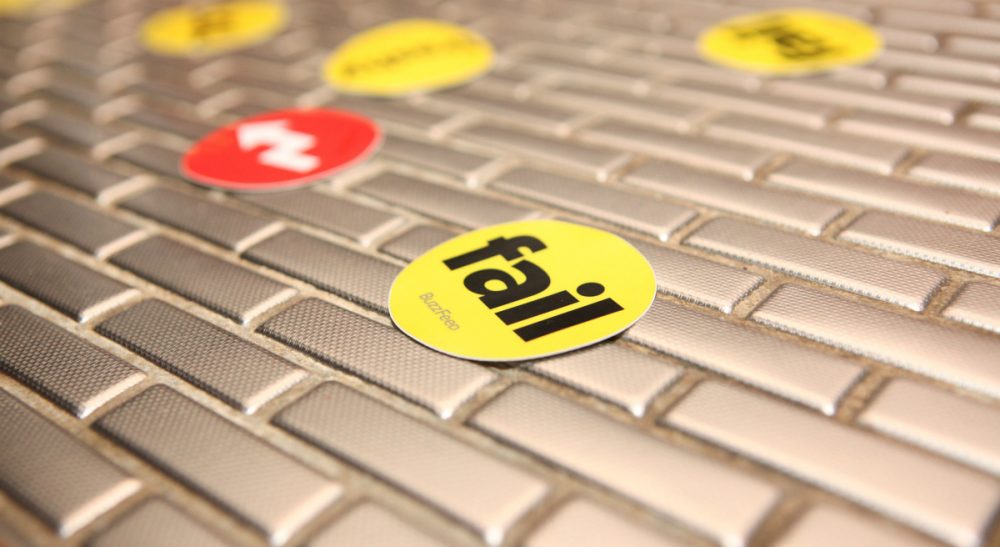Advertisement
6 Reasons Why Listicles Must Die

At first I thought they were ads for reality television shows. “Fifteen Problems all Tall Girls Understand,” or “Fifty-Two Celebs You Didn’t Know Had Herpes!”
But then I discovered that there’s a name for this type of online content. It’s a “listicle,” a term that Wikipedia prissily defines as “a portmanteau derived from list and article.”
[Listicles make] even once pristine sites environmentally toxic.
Popularized by Buzzfeed.com, provider of “the most shareable breaking news,” listicles are all the rage — thematically unified chunks ‘o text structured as lists (to the extent that “roller coaster facts” or “child stars you can follow on Twitter” constitute a theme), with just enough content to qualify as, well, as something more than graffiti. Like styrofoam peanuts, these non-nutritive content chewies occupy enormous amounts of space, encasing and suffocating whatever kernels of real content may lie within a site like BuzzFeed or even Salon. Because they’re so easily consumed, they’re thought to drive page views and spill out over every subsequent page you might visit, making even once pristine sites environmentally toxic.
And that’s why I offer you six reasons why listicles must die.
1. They pose as news.
But surely there are more noteworthy events unfolding in the world than those observations illustrated in “31 Things only Minnesotans will Understand.” My guess is that Minnesotans are already wryly sharing these totems of state culture amongst themselves. The pictures of snow banks and live bait vending machines in this illustrated listicle are passing between friends and family members without the aid of a “global news” platform.
2. Sometimes brevity is just that — brevity. But sometimes it’s stupidity.
See above.
3. Reading should be worthy of more than a 30-second commitment.
We’ve grown so used to swiping, pinching and zooming, that we’ve forgotten that these actions are adaptations intended to make it easier to read content on a small screen. Instead, the content has adapted to the method. Listicles are the textual adaptations to these gestures. Unlike paragraphs, they’re made for scrolling through with fingers and eyes, not for pausing, focusing and reflecting.
4. Some ideas are inherently complex.
One night, I was whining to my husband about my annoyance at being exhorted to shorten and simplify the business articles I write for the time-starved managerial class. He calmly suggested that I pose the following question to the next person who told me to “net it out:” If I had the secret to eternal life, but it took more than three bullet points to explain it, would you read it? His point, of course, is that some ideas are worth the mental exertion that hypotheses, imagination and argument require. (And, I’d argue, these mental activities confer the same benefits as physical exercise, creating fitter, more limber minds). In contrast, a listicle aggressively lowers the reader’s expectations, announcing that none of its contents are worth even getting off the couch for.
5. Lists don’t allow for hierarchy.
Which of my arguments in this post is most important or foundational? Which is dependent on or subsumed by another? Nothing in its structure gives you any clue. Much of the pleasure in thinking, writing and reading is in climbing a logical scaffolding, maybe even building our own. But lists are relentlessly flat and undifferentiated, about as topographically and intellectually nuanced as a Sorry gameboard.
6. This is the sixth and therefore last reason why listicles must die.
Why am I so insistent on six (as opposed to the more interesting five or seven)? Because thanks to typo-prone online porn seekers, “six” attracts exponentially more page views than any other number. And after all, it’s all about the page views, right?
Related:
